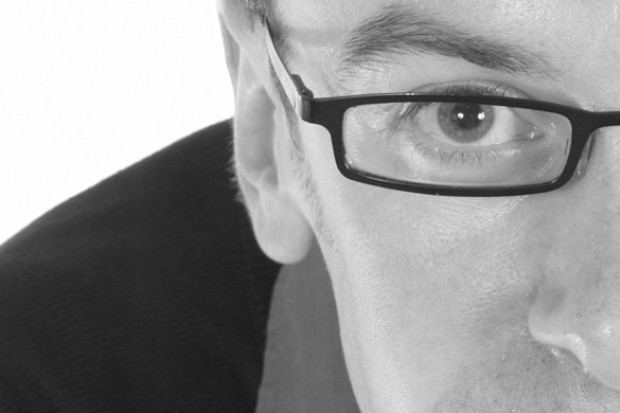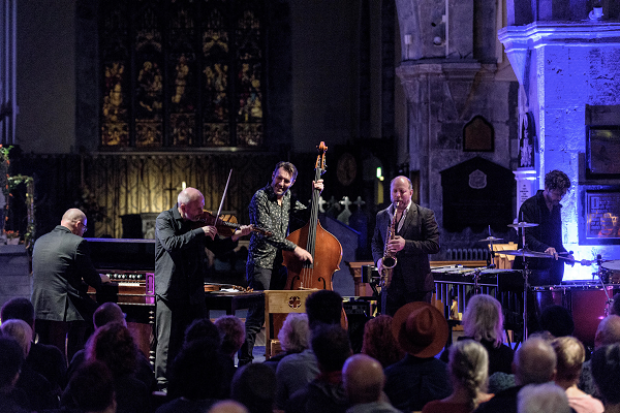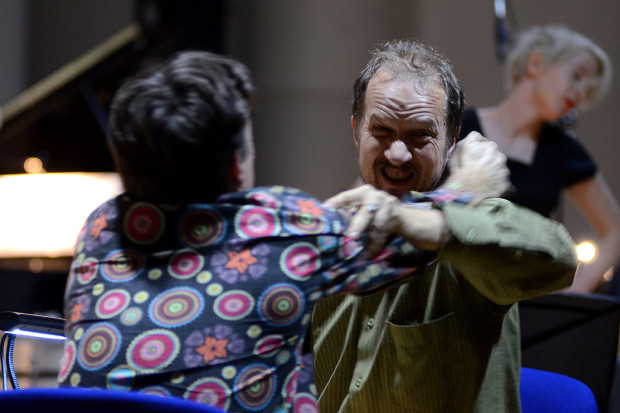Live Reviews: Dublin Electronic Arts Festival 4
Various Locations, Dublin, 27 – 31 October 2005
The annual Dublin Electronic Arts Festival has tried in its four years of existence to appeal to both the punters who just want to go out and dance and those of a more sedentary disposition. For its first two years, DEAF had a very definite bias toward the former, but in 2004 managed an impressive balance between the two. DEAF ’05 seemed to swing back slightly in favour of more dance-orientated fare, but there was still plenty on offer for both musical mindsets.
The first event of the festival, on Thursday the 27th October in the Sugar Club, was presented by the Crash Ensemble, who have been involved with DEAF from its very beginning. Sadly, the first piece, a performance of Alvin Lucier’s Music for Snare Drum, Pure Wave Oscillator and One or More Reflective Surfaces, fell rather flat, though not from lack of trying. The problem was the lack of any ‘reflective surfaces’: the Sugar Club is somewhat noted for its dead sound, and so very few of the oscillator’s hums and screeches ever rebounded back to the snare drum. There was the occasional pathetic rattle, but not much more.
Terry Riley’s In C fared much better, although the sound mixing was a bit random, as the instruments would jump from inaudible to deafening several times, for no apparent reason. Despite this, the Ensemble gave the minimalist classic a thoroughly enjoyable and engaging performance that was very well received. Even better (and not just because the sound was less erratic) was La Monte Young’s Composition 1960 #7, a 25-minute drone canon performed on trombone, violin, viola, cello and bass.
The night’s special guest, the Berlin-based American composer Arnold Dreyblatt, followed with his own Nodal Excitation. This 1979 composition very much reflected not only Dreyblatt’s influences (such as Lucier, Riley and Young), but also his New York City contemporaries like Glenn Branca and especially Rhys Chatham. Dreyblatt’s solo wire-strung bass performance was full of the energy and adventurousness which made that NYC scene so exciting 25 years ago.
Too bad that the same enthusiasm wasn’t around for the last piece. Resonant Relations was written by Dreyblatt especially for the Crash Ensemble this year, but their performance was clinical and overly-studied, and tedium set in before the piece was even half over. Unfortunately, a very disappointing finish to the gig.
And the disappointment continued: Dutch electro kingpin I-F cancelled his DJ set in Traffic the same night. I-F, who had a huge dancefloor smash in 1997 with ‘Space Invaders Are Smoking Grass’, was one of the more hotly-anticipated events of this year’s DEAF, but pulled out only hours beforehand because of a severe toothache.
On Friday, ex-Fela Kuti drummer Tony Allen played with Dublin-based electronic collective Afronova, but this reviewer opted instead to see the electronica showcase hosted by Undercurrent, one of the more down-to-earth promoters in the city. Very little to stroke the chin to, but much dancing to be had. Donegal-born electro producer Magnetize was especially impressive, celebrating the launch of his EP on the respected Templedog label with a searing live set.
Saturday saw what was being touted as this year’s DEAF main event: three floors of music in Filmbase. This venue in Temple Bar was once the Arthouse gallery, but closed down several years ago. It reopened under the new name only a year ago, and this was the first musical event to take place there. And despite the impressive lineup, it didn’t work very well at all. The amount of sound bleeding between floors was ridiculous; you could hear the DJ sets on the first floor all the way down in the basement. Plus, even though strolling around and checking out what’s on display is what a festival is all about, too many people moving about in too small a venue resulted in a constant, and very distracting, background buzz. Any act trying to do something in the least bit atmospheric or ambient had their work cut out for them.
That being said, the two best performances of the entire festival happened in the basement of Filmbase. The ‘Godfather’ of Irish electronic music, Roger Doyle, put on a great show, despite all the distractions (and a somewhat unappreciative audience). Working with his ensemble, General Practice, Doyle spent most of his time using what looked like one of those plasma balls to trigger electronic squeals, squiggles and squelches. The music ranged from ratchety electronica to Heat-styled noise and jazz guitar freakouts (courtesy of Keith O’Brien). The set finished with contributions from a female vocalist, Tuula Votilainen, whose Diamanda Galas-esque shrieking might not have been to everyone’s taste, but fit the accompanying music very well.
Following a technically brilliant but crashingly boring performance by bassist Lisle Ellis, the set by theremin virtuoso Pamelia Kurstin was stupendous. Far more than mere wallpaper ambient music, but not quite full-on industrial drone, her performance hovered somewhere in between, not entirely different from the sort of sublime electronica that Pan Sonic achieve in quieter moments. In the process, Kurstin looked like an air guitarist, making small movements with her hands and fingers in the manner of millions of would-be rock stars. The occasional readjustment of her effects pedals only added to the illusion (the difference being, of course, that she was actually making music). A fantastic performance.
On Sunday afternoon, avant-garde promoters Lazybird hosted live performances by Bird on Wire and Decal. The former is probably better known under her dancefloor-orientated alias Americhord; her current project is somewhat more experimental, but this set was still funky enough to get heads nodding throughout. Decal have been at the centre of the Irish electronic music scene for over a decade now, but have moved from their Warp-inspired beginnings into a kind of updated grindcore, influenced by the darker side of post-rock and some of Justin Broadrick’s less pummelling excursions. Intense.
Although Saturday at Filmbase was nominally the main event of DEAF, the organisers (Dublin-based techno label D1) didn’t do much to hide the fact that they were far more excited that Galaxy2Galaxy, a live band version of techno legends Underground Resistance, were to play in the Village on Sunday night. And the reaction to the night’s set was predictably ecstatic. This reviewer, however, felt that their hi-tech jazz (UR’s own term) was bland and even a bit cheesy, owing far more to Weather Report than to Herbie Hancock. It must be said, however, that the atmosphere in the venue was electric; it was obvious that most of the audience, including the promoters themselves, had waited years for this moment.
But even though DEAF finally bagged their dream act, one hopes that they won’t just rest on their laurels. Over the past four years, the festival has brought many great acts to Ireland that might not have come otherwise, and there’s every reason to expect that they’ll continue to do so next year. Here’s looking forward to DEAF 5 ’06.
Published on 1 January 2006
Paul Watts is a DJ, promoter and radio host. He lectures in theoretical physics at UCD.












